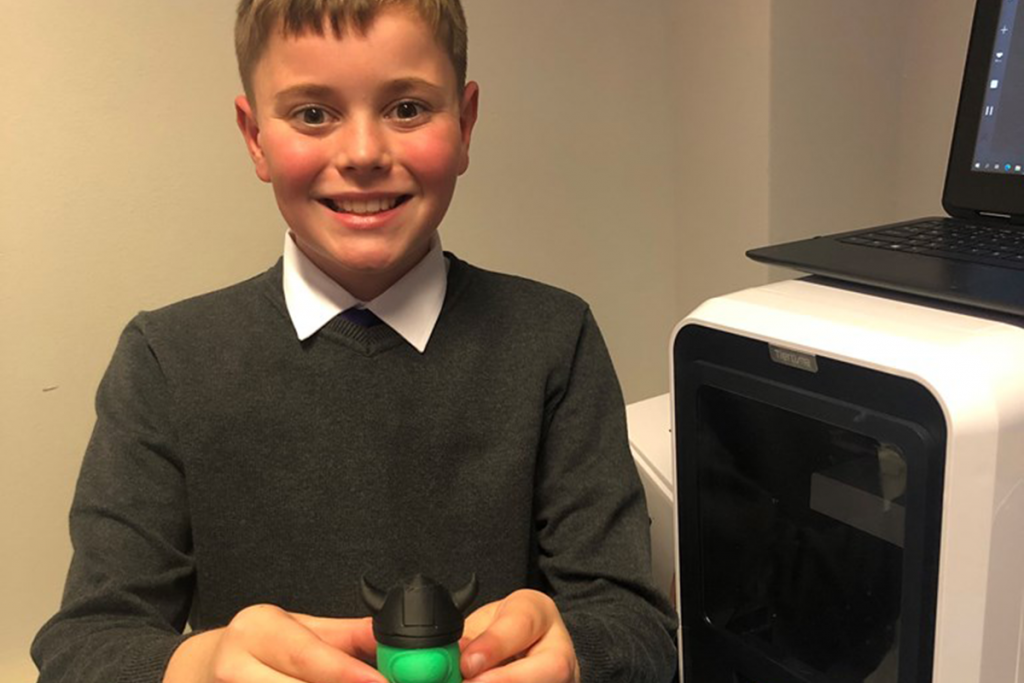
Face masks, ventilators, face shields, hands-free handles and swabs were the introduction to 3D printing for much of the general public in spring 2020. Schools, UTCs, FE colleges, apprentices and universities set out to design and produce solutions to the many medical shortages at the beginning of the pandemic.
3D printing was a high profile, clever solution, aimed at meeting the pressing needs of the health sector. Now it is going mainstream as primary children are being introduced to the potential of this very practical technology for science, creativity and design.
Promoting the STEM agenda
In 2017, the Scottish Government published the STEM Education & Training Strategy with the aim of inspiring children and adults to engage in STEM related activities. There has been a real drive since then to embed STEM within the curriculum from a young age and provide pupils with new technologies and experiences. 3D printers encourage children to explore, to design, to create, to communicate, to think critically and to test their ideas. All this widens young learners' horizons, whilst enabling them to think about exciting future careers.
3D Printers are just one of the many technologies that can encourage STEM learning in schools. In the early days they were often dismissed as gadgets for hobbyists but now they play a key role in manufacturing, architecture, engineering, biomedical, film and television. 3D Printers now play an important technological and R&D role within businesses around the world. They may be used for prototypes, experiments, tooling, to showcase ideas so they are an important educational tool.
Fife's 3D primary printer programme
Following on from the STEM strategy, in 2018 Fife College in partnership with the Council's Economic Development Culture of Enterprise Programme set up a 3D Printer Programme for children in primary classes five to seven, aged 8-11.